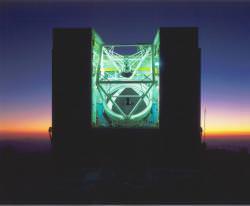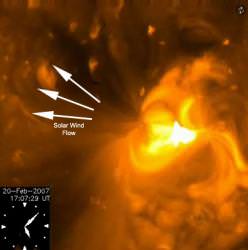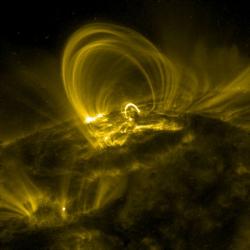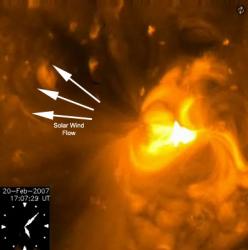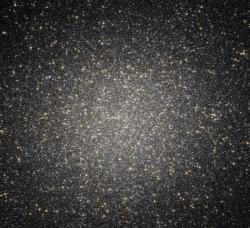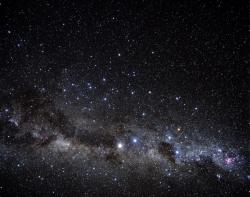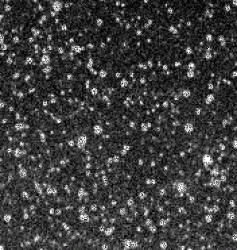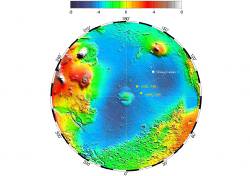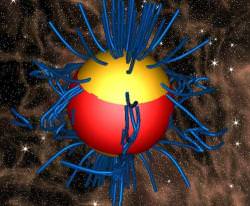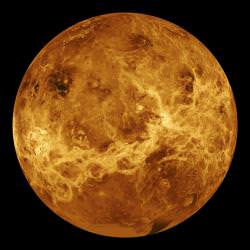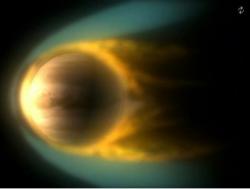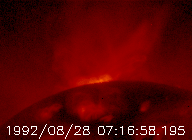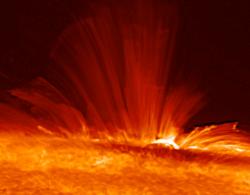The connection between solar activity and global warming has been a contentious issue for a long time. The idea that cosmic rays create global cloud cover just doesn’t seem to be working out; even the highest estimates of cloud cover variation caused by cosmic ray flux predict the effect to be very small. Now UK scientists have stepped into the debate, producing scientific evidence that there is no link between global warming, cosmic rays and solar activity. Sorry global warming sceptics, we might have to cut back on the emissions after all…
The connection between solar activity and global warming is thought to go like this: The Sun experiences massive changes in energy output throughout the 11-year solar cycle. At its peak (at solar maximum), the Sun’s influence over local space is at its highest. Its massive magnetic field will envelop the Earth and spiral into interplanetary space. As it does so, the immense and large-scale solar wind will deflect high energy cosmic rays. So, counter-intuitively, when the Sun is at its most active, cosmic ray collisions with the atmosphere is at its lowest. It is has been predicted by scientists such as Henrik Svensmark at the Danish National Space Center (DNSC) that these high energy cosmic rays will impact the Earth’s atmosphere, create droplets of water, thus generating cloud cover. So, following this logically, we should have a global decrease in cloud cover during periods of high solar activity (when cosmic rays are not deflected by the solar wind), causing global warming (as there will be less clouds to reflect the solar radiation). Many of the climate problems we are having at the moment can then be attributed to the Sun and not human activity.
But there’s a problem. As previously reported by the Universe Today, research groups will often publish conflicting results about the cosmic ray effect on cloud production. In one of the most definitive results to come out of this area of study has just been announced by UK scientists, and guess what? The Sun/cosmic-ray theory has no measurable effect on the climate change we are currently experiencing.
Dr. Svensmark’s idea was central to the science behind the documentary “The Great Global Warming Swindle” where the human impact on global climate change was brought into question. This theory has been under fire since its conception by highly regarded scientists such as Mike Lockwood from the UK’s Rutherford-Appleton Laboratory. Svensmark stands by his work. So with this in mind, Dr. Terry Sloan from Lancaster University set out to prove Svensmark’s hypothesis. But the results aren’t pretty.
“We tried to corroborate Svensmark’s hypothesis, but we could not […] So we had better carry on trying to cut carbon emissions.” – Dr. Terry Sloan
In a separate study, Giles Harrison from Reading University, also studied the effect of cosmic ray flux on the amount of cloud cover, stating it is an important area of research, “…as it provides an upper limit on the cosmic ray-cloud effect in global satellite cloud data“. Although restricted to the atmosphere above the UK, Harrison’s study also returns the verdict that there is only a very weak cosmic ray effect on cloud production.
The Intergovernmental Panel on Climate Change (IPCC) released a report last year pointing the finger at human activity as the root cause behind global warming. There are very strong correlations between carbon emissions and global warming since the 1970s, so the IPCC has strongly recommended that the international community make radical cuts to their carbon emissions. What’s more the IPCC point out that the contribution from greenhouse gas emissions outweighs the effect of solar variability by a factor of 13 to one.
“…as far as we can see, he has no reason to challenge the IPCC – the IPCC has got it right.” – Dr. Terry Sloan
Source: BBC


